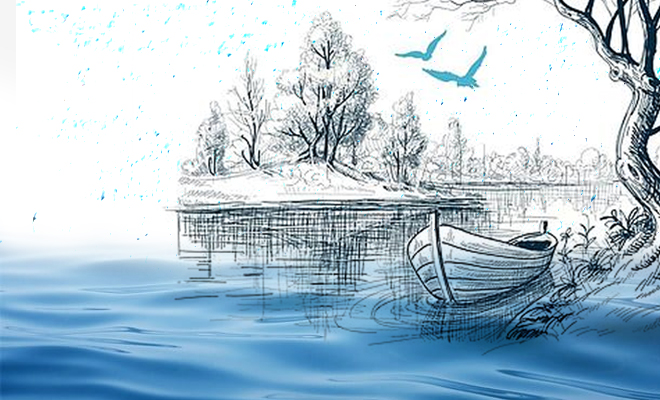Rivers Ganga And Yamuna Are Cleaner And Clearer. Our Absence Does More Good Than Bad

That India is a religious country is a fact known by everyone in the world. But, the lesser known fact remains that the price of this religious sentiment is often paid by mother nature here. Especially the mighty rivers that flow through the cities, and in the name of being holy, had become a home ground of waste. Two of the main rivers, Ganga and Yamuna, with a religious and mythological significance, have been sound examples of the amount of waste we will dump in the name divinity.
As people worship the waters of the Ganges, calling it spiritual and sublime, using it to wash their sins and dirt into it has led for it to become no more than a polluted stream, the water from which would kill more than it would cure anyone. As has been the case with Yamuna, a river passing through the several towns, that had ultimately come to resemble a canal full of overflowing waste. And the government failed in its several attempts in getting these rivers clean with initiatives like The Yamuna Action Plan and the likes of it but what they couldn’t accomplish, coronavirus did.
As people were shooed into their houses, on account of the 21 day lockdown presently going on in the country to evade coronavirus, the isolation has but turned out to be the best thing that has happened to nature in a long long time. Probably for the first time in so many years, the water of the holy river Ganga has been observed to become almost 40-50% cleaner. A development that had nothing to do with humans, rather lack there of and to be honest, we weren’t surprised.
Also Read : This Transgender Community In Surat Is Delivering Food Kits To Residents Of A Nearby Slum Until The Lockdown Is Over. This Is So Heartening
Look this is possible!
Pictures of Yamuna River are going viral. 2019 the river frothed and the river is all blue now with a clean sky. Do we learn something here?
Pics from social media pic.twitter.com/NqVILHkh0W— Sudha Ramen 🇮🇳 (@SudhaRamenIFS) April 5, 2020
Water quality of River Ganga improves by 50% as COVID-19 lockdown shuts industries in Kanpur#Ganga #lockdown #lockdownindia #Lockdown21 #COVID19 pic.twitter.com/ZwqC3sragu
— First India (@thefirstindia) April 5, 2020
In words of Dr PK Mishra, Professor at Chemical Engineering and Technology, “1/10th of the pollution in Ganga river comes from industries. As industries are shut due to lockdown, situation has become better. We have seen 40-50 per cent improvement in the Ganga. It is a significant development. Due to rainfall on March 15-16 in areas where Ganga flows, the water level has also increased, which means that its cleaning capacity has also increased. There is a considerable improvement if we look at the pre-lockdown period and after March 24.”
Yamuna River in Delhi, how clean. Human intervention adversely affecting the Ecosystem. We stopped intervention due to lockdown & see there was no need to treat the Yamuna water. साफ़ रखने की ज़रूरत है, साफ़ करने की ज़रूरत पड़ेगी ही नहीं। pic.twitter.com/vLBLsDnbNL
— Bhisham Singh IPS (@BhishamSinghIPS) April 5, 2020
Where as, vice-chairman of Delhi Jal Board Raghav Chadha said that, “Yamuna is looking cleaner these days. The stoppage of industrial pollutants and industrial waste has definitely had a positive effect on water quality. We will conduct testing of the water to ascertain the percentage of improvement in the quality.”
Suddenly, from a scenario where about 4000 locals would take a dip in the water every day, to now when they have all been restricted to washing away their impurities in their washrooms instead, the rivers have finally begun to cleanse themselves and return to their former glory. A local in Varanasi also commented on the matter and said, “There is a lot of difference when we see the water of the Ganga river today and what used to be earlier. Today, the water looks clean. One of the biggest reasons behind this is that today all factories are closed. People are not taking bath at the ghats. If this is the condition in 10 days, then I believe Ganga river will be like it used to be earlier.”
Perhaps it is now when the Pollution Control Board of cities that pass through the rivers can take an action and ensure that people don’t go back to their old ways. It is clear in this 21 day lock down period, that we are as toxic to nature as we are to people, and sometimes steering clear is the best thing we can do to avoid it. Guess, it is time we acknowledge and make most of this detoxification, and don’t go back to our old ways lest we want to end up exactly back in square one.

















